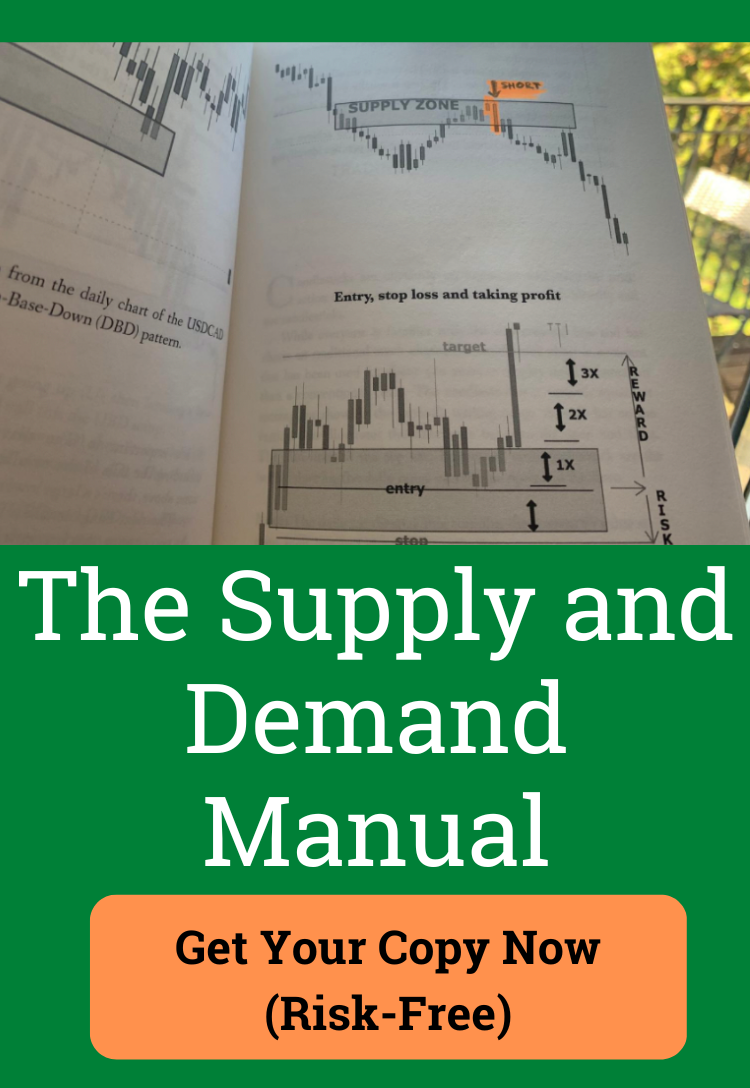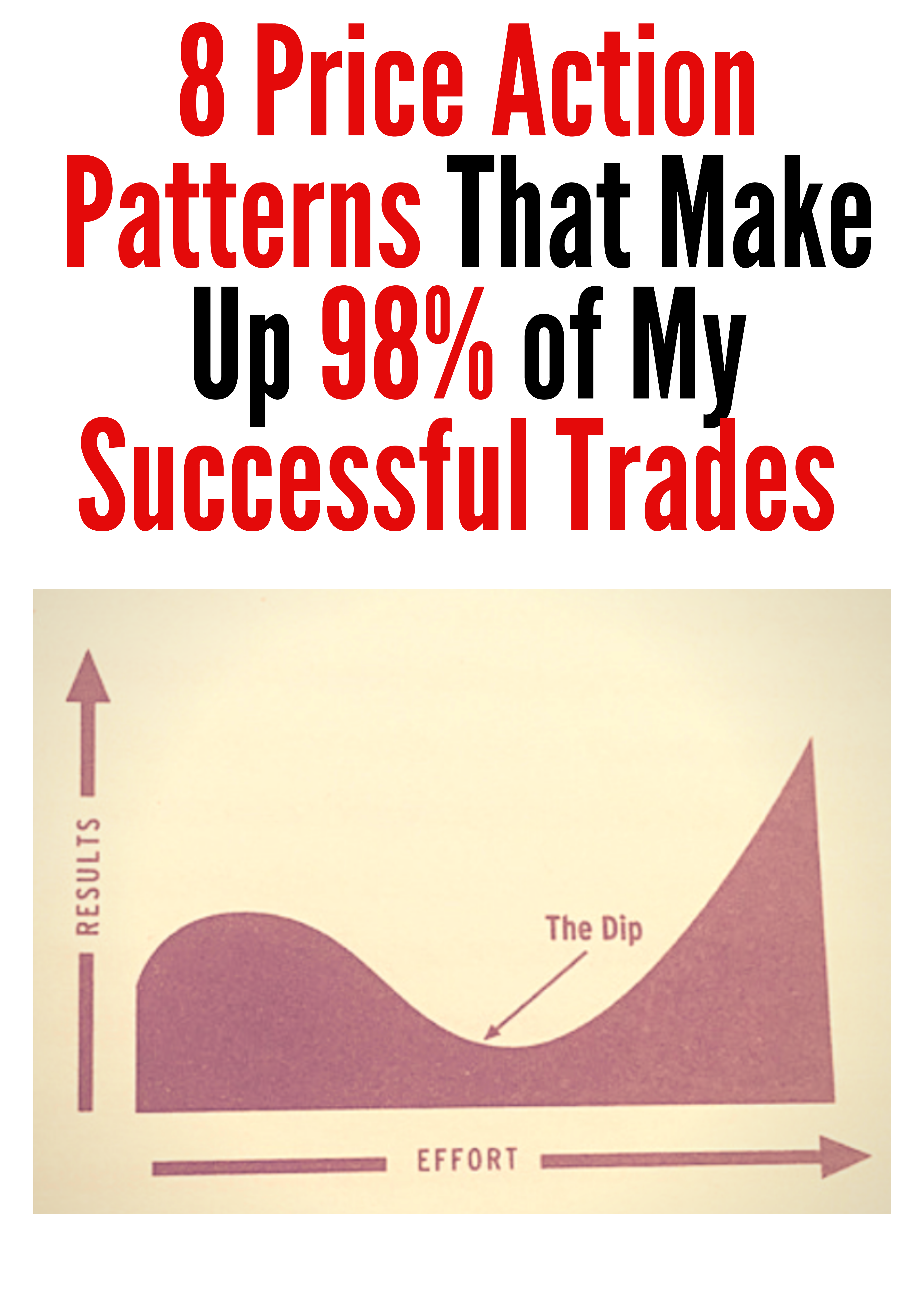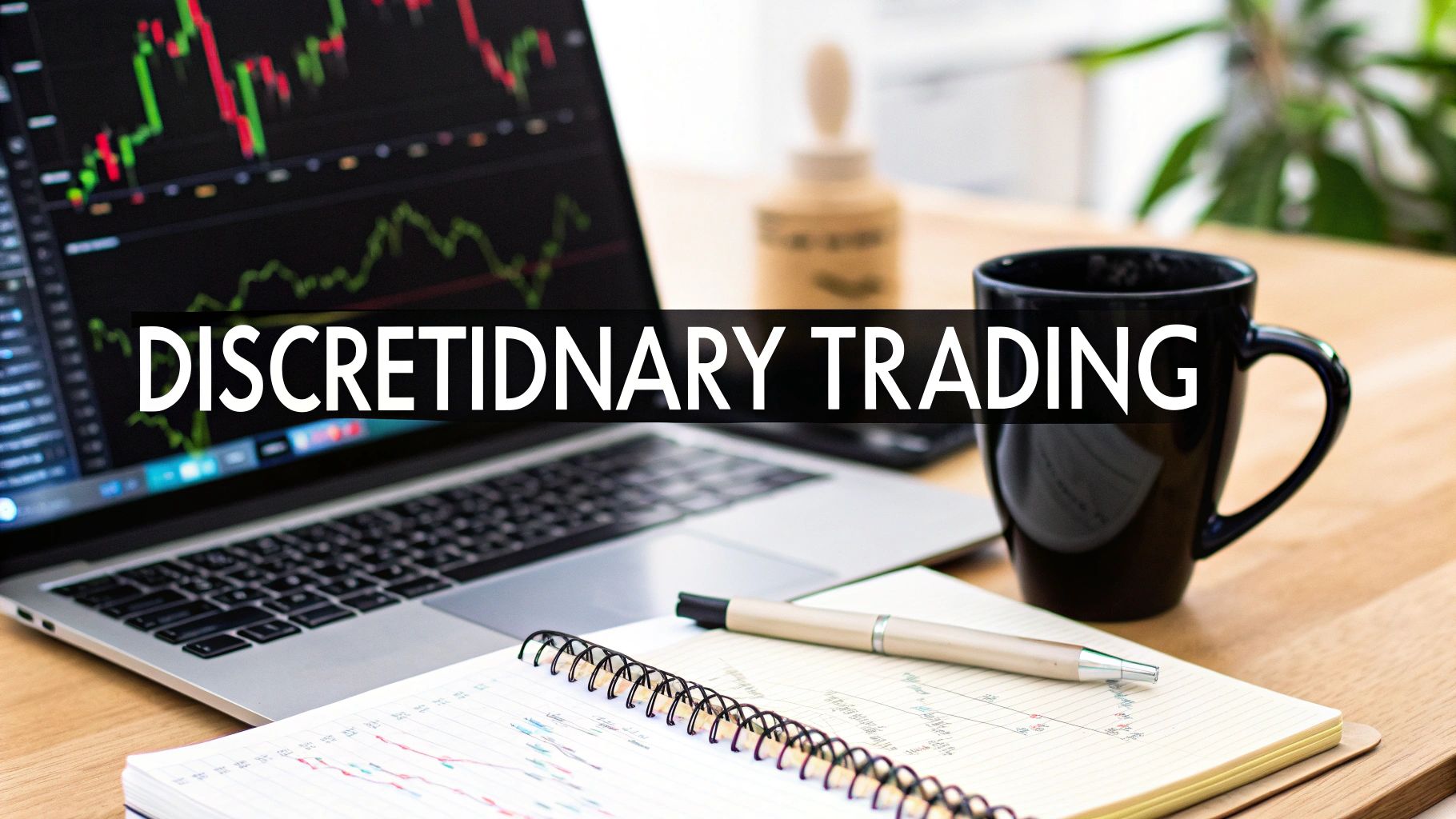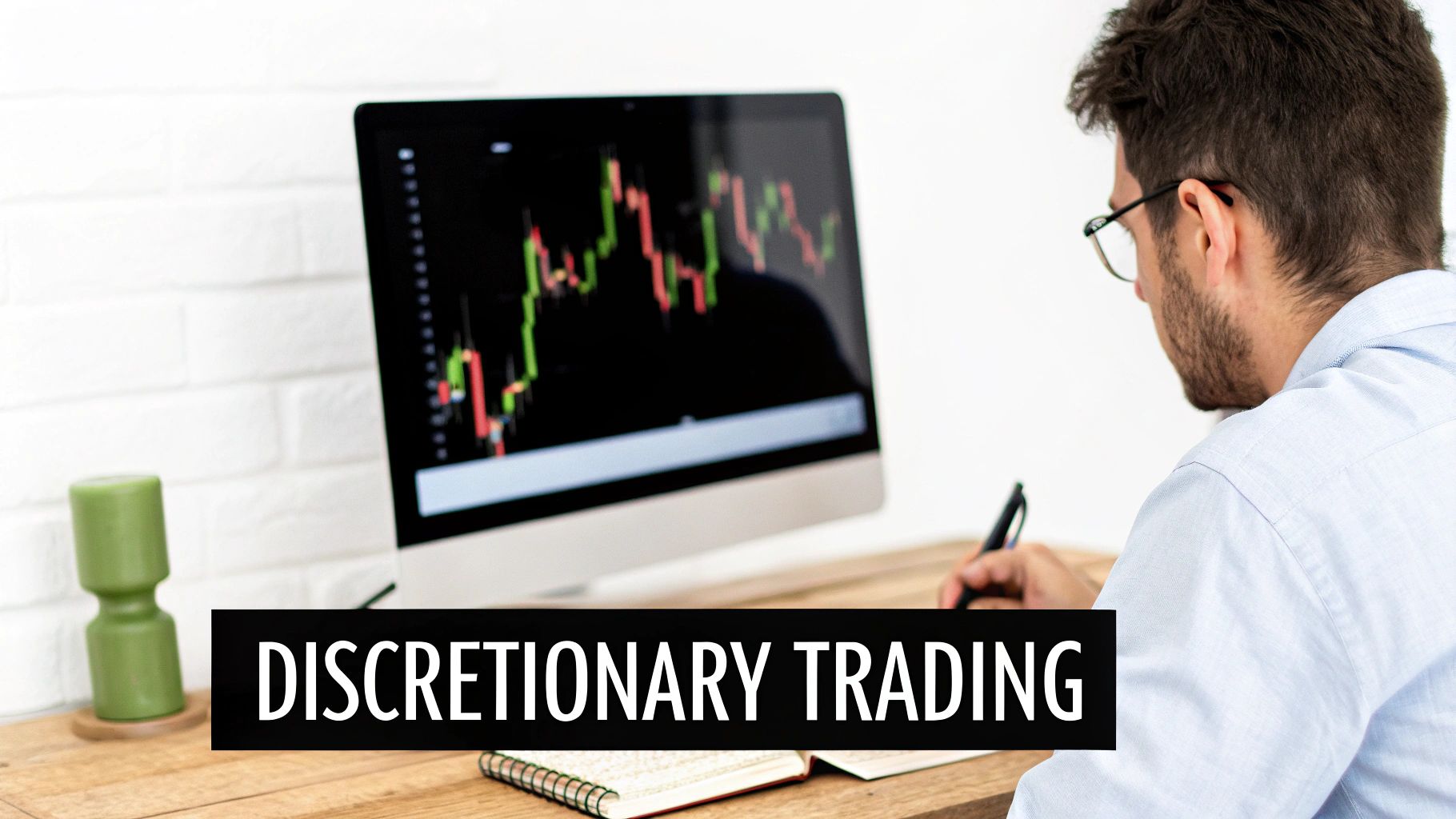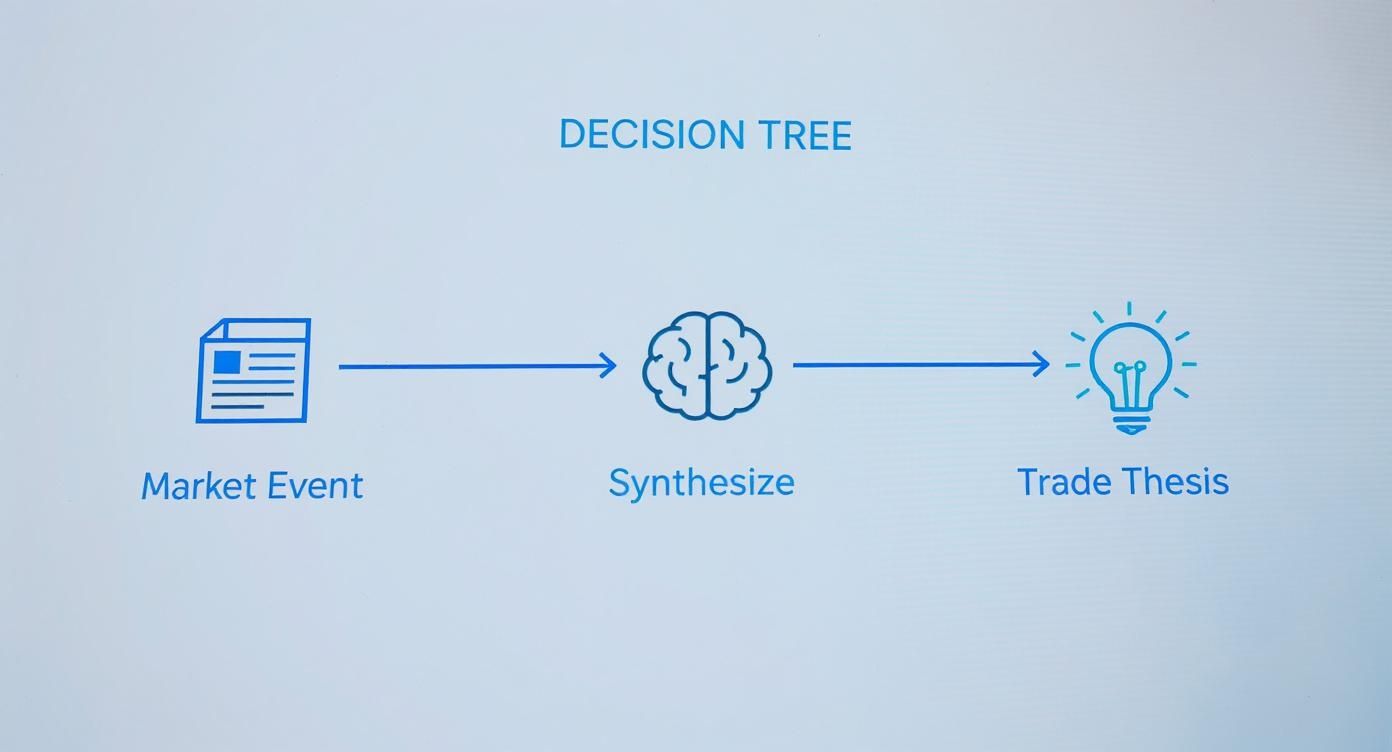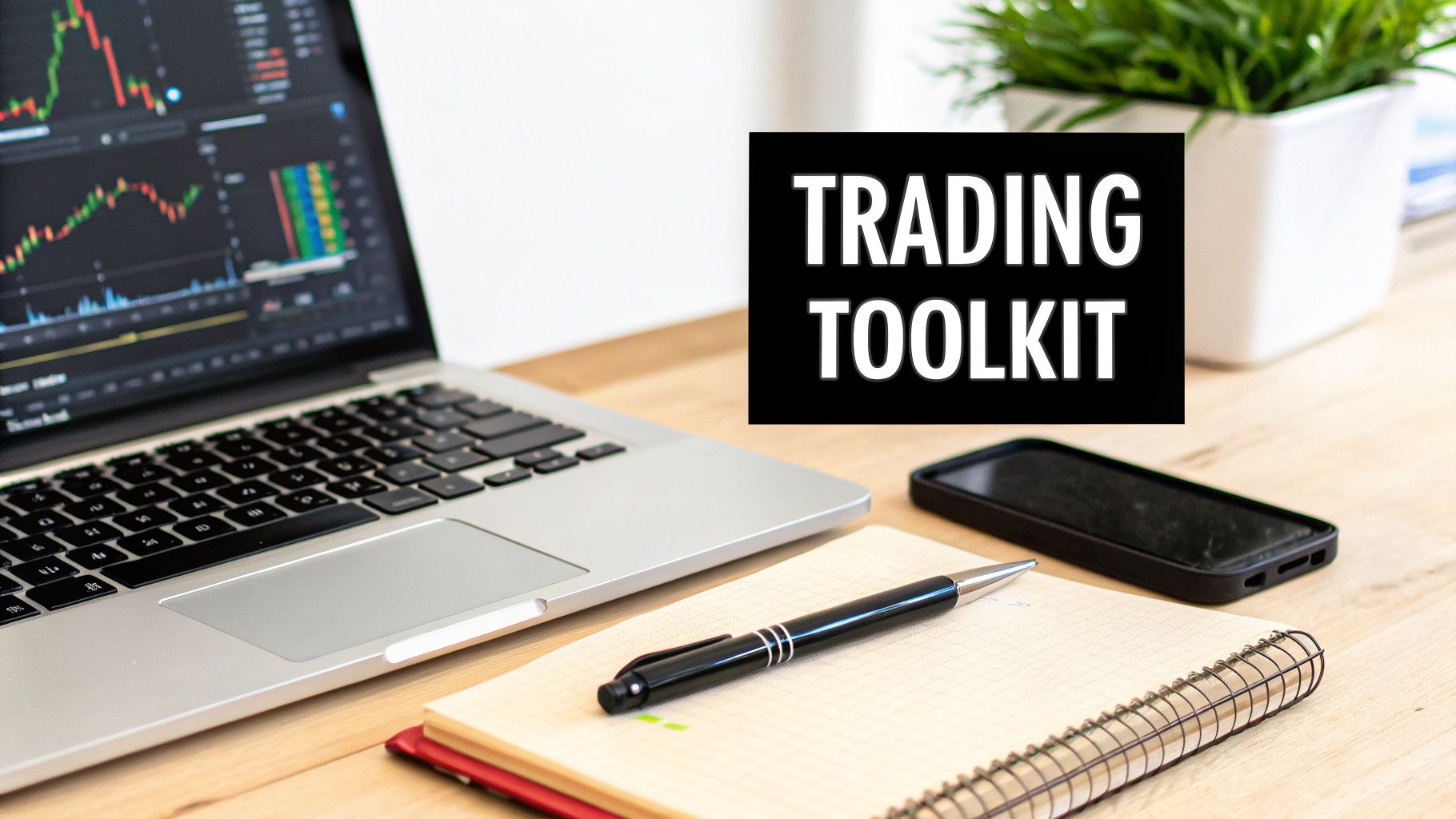what is discretionary trading: How human judgment wins
Discretionary trading is all about trusting your own judgment instead of handing every move over to computer code. It combines live market reading with a trader’s experience and gut feeling, so you can stay flexible and pivot when the situation demands it.
The Art Of Human-Centered Trading
Picture a chef tasting dough, adjusting seasoning by smell and feel rather than following a strict recipe. They blend skill, instinct, and real-time feedback to get the perfect result. That’s discretionary trading—you’re the head chef in the market kitchen.
In contrast, systematic or algorithmic trading runs on pre-set rules and backtested signals. With discretionary trading, you’re constantly reading price action, volume shifts, and news headlines, then weaving those threads into your strategy. If you want to dive deeper into how traders adapt to shifting environments, check out Quantified Strategies.
At its heart, discretionary trading is an artful balance of data analysis and human intuition. It’s spotting nuances an algorithm might miss and making thoughtful calls in the moment.
Key Pillars Of Discretionary Trading
Before you put on your trading cap, you need to know the fundamental ingredients that set this style apart. A discretionary trader doesn’t guess—they gather signals, weigh context, and craft a tailored approach.
- Pattern Recognition – Identifying familiar chart shapes and setups from past experience.
- Market Context – Weighing economic releases, geopolitical events, and sentiment shifts.
- Real-Time Adaptability – Tweaking plans instantly when unexpected data or volatility kicks in.
- Risk Management – Setting clear position sizes and stop-loss levels to protect capital.
Below is a quick at-a-glance summary of these core elements.
Before you dive into your next trade, here’s a handy overview:
Core Characteristics of Discretionary Trading at a Glance
| Characteristic | Description | Example in Practice |
|---|---|---|
| Pattern Recognition | Recognizing familiar price shapes and setups | Spotting a double bottom before a bounce |
| Market Context | Factoring in economic news and shifts in sentiment | Exiting positions ahead of interest rate changes |
| Real-Time Adaptability | Adjusting plans as fresh data emerges | Tightening a stop-loss after a volatility spike |
| Risk Management | Defining position sizes and limits in advance | Using a 1% capital rule for each trade |
This overview can help you spot how each element shapes your trading decisions.
At the end of the day, discretionary trading is about seeing the story behind the numbers—and having the confidence to act when opportunity and risk collide. It’s where human judgment adds the final brushstroke to your market canvas.
How Human Judgment Creates a Trader's Edge
While systematic trading is all about sticking to rigid, pre-programmed rules, discretionary trading is a different beast entirely. It thrives on the art of human judgment. This is where a trader’s edge is truly forged—not from a flawless algorithm, but from the ability to connect dots that a machine simply cannot see. It’s about piecing together seemingly unrelated information to build a unique trading thesis.
Think about the market’s reaction to an unexpected economic report. An automated system might only register the raw data—a number that's higher or lower than analysts predicted. A discretionary trader, on the other hand, reads the nuance. They see not just the number, but how the market is actually reacting to it, sensing subtle shifts in sentiment that charts alone will never capture.
This ability to interpret context is the core advantage. A trader can weigh a classic chart pattern against a sudden geopolitical event and a shift in market chatter on social media, blending all these elements into a single, cohesive strategy. This isn't just a "gut feeling"; it's a highly sophisticated form of pattern recognition, sharpened over years of screen time and experience.
Weaving Together Market Narratives
A key skill for any discretionary trader is learning to create a market narrative. This means understanding the story the market is telling right now and trying to anticipate the next chapter. For example, a trader might notice that while a particular stock is technically breaking down, the broader sector is showing surprising strength. This could be a clue that the breakdown is a false signal—a trap for the unwary.
This requires a multi-layered analysis that goes far beyond simple if-then logic. The discretionary trader is constantly combining:
- Quantitative Data: Chart patterns, volume analysis, and key price levels.
- Qualitative Information: News headlines, central bank commentary, and social media sentiment.
- Behavioral Insight: Recognizing when fear or greed is driving market action, a crucial component of the psychology of trading.
This synthesis allows them to adapt on the fly, a feat that rigid systems really struggle with, especially during volatile or completely unprecedented market events.
Adaptability in an Unpredictable World
Let's face it: markets are dynamic and often irrational. A fixed algorithm that worked perfectly last month might fail spectacularly this month when market conditions change. The discretionary trader's greatest asset is their adaptability. They can pivot their strategy in real-time as new information hits the screen.
The edge isn’t found in predicting the future with certainty, but in reacting to the present with superior judgment and flexibility. It’s about managing probabilities, not chasing absolutes.
Truly understanding how human judgment creates this edge means navigating an unpredictable world through effective risk management strategies. A trader’s discretion applies not just to picking entries, but also to the critical decisions of when to cut losses or take profits based on the evolving market landscape.
Ultimately, this human element transforms trading from a purely mechanical exercise into a dynamic craft, where intuition and experience can make all the difference.
Discretionary vs. Systematic Trading Explained
Trying to grasp the difference between discretionary and systematic trading is a bit like comparing a seasoned artisan to a high-tech manufacturing plant.
The artisan—our discretionary trader—relies on years of experience, intuition, and a "feel" for the materials to create something unique. They adapt on the fly, making small adjustments based on what they see and sense in the moment.
The manufacturing plant, on the other hand, is our systematic trader. It follows a precise, pre-programmed blueprint to produce thousands of identical items with ruthless efficiency.
Neither approach is automatically better than the other, but they come from two completely different trading philosophies.
A discretionary trader is always in the driver's seat, making active, judgment-based decisions for every single trade. They're constantly interpreting evolving market news, synthesizing chart patterns, and calling upon their experience to decide whether to buy, sell, or sit on their hands.
In contrast, a systematic trader does the hard work upfront. They build the "machine"—a rigid set of quantifiable rules that automatically trigger trades without any human meddling once it's running.
This infographic gives a great visual of how a discretionary trader’s mind works, turning a market event into a personalized trading thesis.
As you can see, human judgment is the engine. The trader is constantly adapting to new information as it flows in, which is the core of this approach.
The Core Philosophies
The fundamental split boils down to a single question: who makes the final call?
In discretionary trading, the human is always in control. For systematic trading, the algorithm is the final authority. This simple distinction creates massive ripple effects in everything from flexibility and emotional exposure to scalability.
Systematic strategies are built on a foundation of backtested data and statistical probabilities. Their greatest strength is executing a proven edge with perfect discipline, completely removing human emotions like fear and greed from the equation. You can dive deeper into how this works in our guide explaining what is algorithmic trading.
But that rigidity can also be a critical weakness. When a completely unexpected event hits the market—what many call a "black swan" event—a systematic approach can fail spectacularly. Why? Because it has no historical data for something that's never happened before.
A discretionary trader, however, can adapt. They can use their judgment and experience to navigate the chaos, something a machine just can't do. For a deep dive into highly systematic methods, you can explore topics like Machine Learning Trading Algorithms to see a clear example.
Discretionary vs. Systematic Trading Key Differences
So, how do these two styles stack up against each other in the real world? Below is a table that breaks down the core distinctions to give you a clearer picture.
| Attribute | Discretionary Trading | Systematic Trading |
|---|---|---|
| Decision-Making | Human judgment, experience, and intuition | Pre-defined, purely mathematical rules |
| Flexibility | Very High; can adapt instantly to new info | Very Low; follows a fixed set of instructions |
| Emotional Impact | High; demands strong psychological discipline | Low; emotions are removed from execution |
| Scalability | Difficult; limited by one person's capacity | Easy; can be applied across many markets at once |
| Best Environment | Unpredictable, volatile, or unique market events | Stable, predictable markets with clear, repeatable patterns |
While the methods are worlds apart, both discretionary and systematic traders share the exact same goal: consistent profitability. One isn't inherently superior; success ultimately comes down to the skill of the trader or system designer.
The Real Pros and Cons of Discretionary Trading
Picking a trading style is a lot like choosing a life philosophy—it has to fit your personality and what you're trying to achieve. Discretionary trading offers an incredible amount of freedom and adaptability, but that flexibility comes with a steep price that isn't for everyone. Before you dive down this path, you have to look at both sides of the coin.
The biggest plus is agility. A discretionary trader can react in a heartbeat to a surprise news event or a sudden shift in market sentiment. These are the exact situations where a rigid, rule-based system completely fumbles.
You can spot unique, context-driven opportunities that fly right under the radar of automated screeners. It’s all about blending your technical chart work with a nuanced, real-time read of the market environment. It allows for a level of creativity and intellectual engagement that systematic trading just can't offer. You aren't just following a program; you're building a market thesis and adapting it on the fly.
The Inescapable Challenges
But here's the catch: the greatest strength of discretionary trading—your own judgment—is also its most critical weakness. The psychological pressure can be absolutely immense. With no rigid system to lean on, every single decision rests squarely on your shoulders, opening the door for emotions like fear and greed to take the wheel.
This is where the risk of impulsive trading becomes a real threat. A string of losses can easily lead to "revenge trading," while a big win can make you feel invincible. We've explored these psychological traps in detail, and you can learn more about why human judgement in trading is flawed in our guide.
The real challenge isn’t learning to read the charts; it’s learning to read yourself. A discretionary trader's biggest opponent is often the person staring back from the screen.
Finally, the learning curve is notoriously steep. It takes years of dedicated screen time and thousands of trades to develop the pattern recognition and emotional control needed for any kind of consistency. There are no shortcuts here. Mastery is earned the hard way—through experience, discipline, and ruthless self-analysis.
Weighing the Benefits and Drawbacks
To give you a clearer picture, let's lay it all out. Here’s a direct comparison of what you stand to gain versus what you'll have to overcome.
Key Advantages:
- High Flexibility: You can adapt your strategy instantly to changing market conditions or one-off events.
- Contextual Insight: You can factor in qualitative information, like news and sentiment, that algorithms completely miss.
- Creative Engagement: It’s a deeply fulfilling intellectual challenge for anyone who enjoys active problem-solving.
Significant Disadvantages:
- Emotional Stress: The constant pressure can lead to burnout and poor, emotion-driven decisions.
- Steep Learning Curve: It takes years of experience to build the intuition and discipline required to succeed.
- Difficult to Scale: Your trading is limited by your own time and attention, making it tough to manage a lot of positions or markets at once.
Ultimately, choosing discretionary trading means you're signing up for both its powerful adaptability and its intense psychological demands.
Building Your Discretionary Trading Toolkit
Moving from theory to the trading floor requires more than just knowing the concepts; you need the right set of tools and a solid framework. A sharp discretionary trader isn't just winging it. They're operating from a well-stocked toolkit that supports clear, real-time decisions. This is as much about the technology on your desk as it is about the mental models you bring to the market each day.
The bedrock of any modern trading setup is a combination of advanced charting platforms and live news feeds. Tools like TradingView or MetaTrader 5 are non-negotiable for technical analysis, letting you spot patterns and map out key price levels with precision. At the same time, a constant stream from a reliable news source gives you the context—the why—that your charts can’t.
But the tech is only half the battle. Your toolkit is incomplete without core strategies and ironclad risk management rules.
Core Strategies and Risk Protocols
Discretionary traders tend to favor strategies that let them breathe with the market's rhythm. Two of the most popular approaches are swing trading, where you aim to catch price moves over a few days or weeks, and position trading, which involves holding on for months or even years based on deep, long-term analysis. The "discretionary" part is knowing when to deploy these strategies based on the unfolding market story.
This is exactly why risk management has to be second nature. Without it, even the most brilliant strategy is doomed to fail.
Your risk toolkit absolutely must include:
- Disciplined Position Sizing: This means never, ever risking more than a tiny, pre-decided slice of your capital. For most, that’s 1-2% on any single trade.
- Intelligent Stop-Losses: These are your safety nets. You place an order to automatically get out of a losing trade at a specific price, putting a hard cap on your losses.
- A Detailed Trading Journal: Think of this as your personal performance coach. It’s where you track not just wins and losses, but the reasoning behind every single trade you take.
A trading journal is the ultimate accountability tool. It transforms your subjective decisions into objective data, revealing patterns in your behavior that you can then refine and improve over time.
The long-term institutional belief in this approach is pretty clear. Just look at the Barclay Discretionary Traders Index, which tracks managed programs that are at least 65% judgment-based. By 2025, this index was following 61 different programs, each with a required performance history of at least two years. That alone shows the staying power of this method. You can dig into the full index details and see more about these discretionary trading programs.
When you combine the right technology with proven strategies and unbreakable risk rules, you're not just trading. You're building a complete system that supports consistent, thoughtful decision-making.
Common Questions About Discretionary Trading
Jumping into discretionary trading always stirs up a few big questions. Because it relies so much on human judgment, it can feel a bit like a "black box" compared to a rigid, rules-based system.
Let's tackle some of the most common queries and myths head-on. Getting these answers straight is the first step in figuring out if this path is the right one for your personality and trading goals.
Is Discretionary Trading Just Gambling?
This is probably the most common question I get, and I understand why. But the answer is a hard no. Professional discretionary trading is the complete opposite of gambling.
Yes, both involve risk and uncertainty, but that's where the similarities end. Gambling is about pure chance, usually with the odds stacked against you. In contrast, discretionary trading is a business built on rigorous analysis, a well-defined strategy, and, most importantly, disciplined risk management. A trader builds an edge by studying charts, recognizing historical patterns, and understanding what makes a market tick.
A successful discretionary trader is a risk manager first, carefully protecting capital to generate returns over the long haul. A gambler is just hoping to get lucky on a single, unpredictable event.
Can Beginners Start with Discretionary Trading?
Technically, yes, but it's like learning to drive in a Formula 1 car. The learning curve is incredibly steep. Real success here is built on a foundation of experience, emotional toughness, and a sixth sense for patterns that only comes from years of staring at charts.
That's why a lot of seasoned traders suggest newcomers start with something more mechanical or systematic first. It's a great way to build the essential habits of discipline and risk management without the added pressure of subjective decision-making.
If you're set on this path, my advice is to:
- Spend a ton of time on a trading simulator. Practice without putting a single dollar at risk.
- Go back and study historical charts. See how patterns you think you've found actually played out.
- Start with an account size that is almost uncomfortably small. Your goal is skill-building, not getting rich overnight.
This slow-and-steady approach helps you develop the mental armor you'll need when you're making tough judgment calls with real money on the line.
How Does a Discretionary Trader Manage Emotions?
This is the million-dollar question. Honestly, managing emotions is probably 90% of the battle for a discretionary trader. The constant pressure and subjective nature of the work can easily let fear and greed take the wheel, and that's a recipe for disaster.
Successful traders don't just "try to stay calm." They build systems to keep themselves grounded.
First, they live and die by their trading plan. This isn't just a vague idea; it's a written document with hard rules for entries, exits, position sizing, and stop-losses. When the market is going haywire, this plan is your anchor. It stops you from making stupid, impulsive moves.
Second, they keep a detailed trading journal. This is way more than just a P/L statement. It’s a tool for ruthless self-analysis. By writing down why they took a trade and how they felt during it, they can spot destructive patterns. Maybe they cut winners short out of fear or double down on losers out of ego. The journal reveals all. This is the real work behind what is discretionary trading at a professional level.
What Is the Role of a Trading Journal?
When every single trade is your own subjective call, the trading journal becomes your source of objective truth. It's the single most important tool for getting better over time, and for a discretionary trader, it's completely non-negotiable.
A good journal doesn't just record the trade; it captures the "why" behind it. You should be documenting the market setup, your specific thesis, the emotions you were feeling, and your reasoning for getting out (whether for a profit or a loss).
By reviewing this log week after week, you start to see the real story of your trading. You might find you're a rockstar in trending markets but get chopped to pieces in ranging ones. Or maybe you discover that you trade terribly after a big loss. This feedback loop—turning subjective feelings into hard data—is how a discretionary trader hones their intuition into a reliable, profitable skill.
Ready to stop guessing and start trading with a proven, straightforward strategy? At Colibri Trader, we provide the action-based programs and mentorship you need to master price action and trade with confidence. Take our free Trading Potential Quiz and unlock your edge today!


